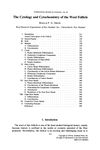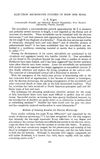TLDR Hair structural proteins are synthesized sequentially in specific cells, offering a new way to study hair proteins and defects.
The study investigated the synthesis locations of hair structural proteins in human anagen follicles by microdissecting live tissue containing presumptive hair shaft (PHS) cells. Using protein solubilization and polyacrylamide gel electrophoresis, researchers compared keratin proteins in hair and PHS. They found that intermediate filaments (IF) and matrix proteins were synthesized sequentially in PHS. A previously unobserved polypeptide component was identified, which varied in proportion as PHS cells differentiated. The study highlighted PHS as an alternative source for studying human hair proteins, offering a new basis for examining hair defects and comparing hair proteins in different contexts.
135 citations
,
November 1987 in “Differentiation” Outer root sheath cells consistently express certain keratins influenced by their environment.
198 citations
,
October 1986 in “Differentiation” 28 citations
,
October 1985 in “The Journal of Cell Biology” Researchers isolated and identified structural components of human hair follicles, providing a model for studying hair formation.
 90 citations
,
January 1979 in “International review of cytology”
90 citations
,
January 1979 in “International review of cytology” Wool follicles are complex, involving interactions between different cell types and structures.
 34 citations
,
August 1966 in “Experimental cell research”
34 citations
,
August 1966 in “Experimental cell research” Keratin fibrils in hair form and stop growing at specific points in the follicle.
 191 citations
,
November 1959 in “Annals of the New York Academy of Sciences”
191 citations
,
November 1959 in “Annals of the New York Academy of Sciences” Hair and wool have complex microscopic structures with microfibrils and varying cystine content.
January 2010 in “Acta Laboratorium Animalis Scientia Sinica” The UHS promoter is specific to mouse hair follicles.
2 citations
,
November 1996 in “PubMed” Most people have similar hair protein patterns, but a rare variant was found in two women.
7 citations
,
April 1996 in “British Journal of Dermatology” Hair structural proteins are synthesized sequentially in specific cells, offering a new way to study hair proteins and defects.
385 citations
,
November 1990 in “Journal of Cell Science” Human hair follicles can grow in a lab setting.



